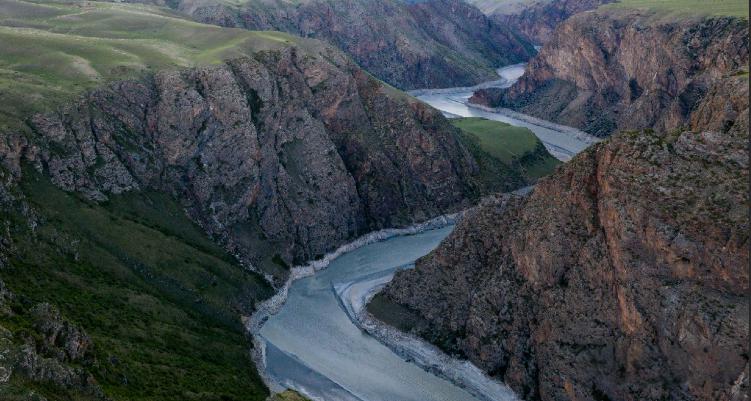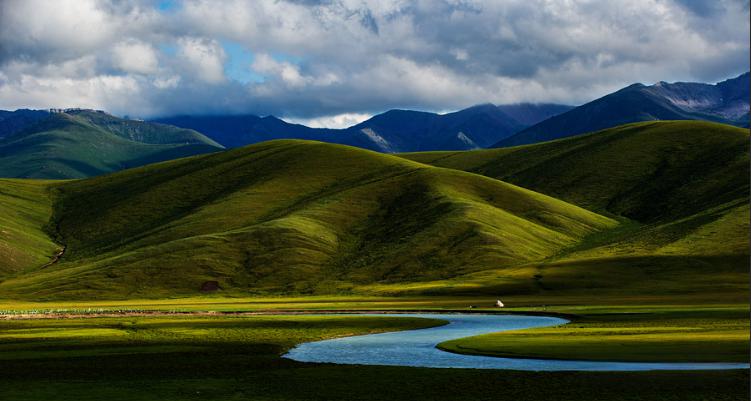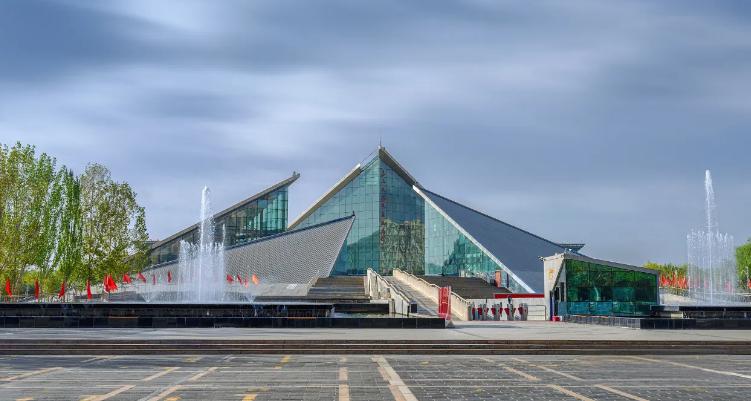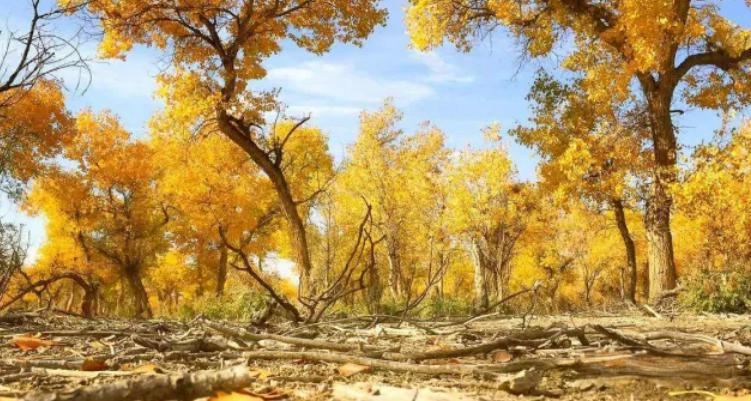1.Tianshan Lake

Tianshan Tianchi Nature Reserve, located in Fukang City, Changji Hui Autonomous Prefecture, Xinjiang Uygur Autonomous Region, is a natural scenic area centered on alpine lakes. It is known as the “Pearl of Tianshan Mountain”. Tianchi was formerly known as “Yaochi”. Tianshan Tianchi Nature Reserve can be divided into the Big Tianchi North Slope Scenic Area, the Big Tianchi Scenic Area, the Shiwan Luohan Niebanmu Mountain Scenic Area, the Niangniang Temple Scenic Area and the Bogda Peak North Slope Scenic Area.
2.Keketuohai

The Keketuohai Scenic Area is located in Keketuohai Town, Fuyun County, Altay Prefecture, Xinjiang Uygur Autonomous Region. The scenic area is mainly composed of the Karaxengger earthquake fault zone, Kekesuli, Iremu Lake, and Irtysh Grand Canyon. It integrates beautiful canyon river source scenery, swamp wetland landscape, polar lakes, geological and mineral resources and other natural scenery, and integrates grassland nomadic culture, Western ethnic customs, regional folk customs and other cultural landscapes.
3.Sailimu Lake

Sailimu Lake, located in Bole City, Bortala Mongol Autonomous Prefecture, Xinjiang Uygur Autonomous Region, is called “Sailimu Nur” in Mongolian, which means “lake on the ridge”. It is the highest altitude and largest alpine inland lake in Xinjiang. The lake is the last place favored by the warm and humid air currents of the Atlantic Ocean and is known as the “last tear of the Atlantic Ocean”.
4.Grape Valley

Grape Valley, located in Turpan City, Xinjiang Uygur Autonomous Region, is the largest valley in the Huoyan Mountain Valley. It is like a green ribbon, floating in the center of the basin. In Grape Valley, you can not only experience the magical landscape of nature, but also taste the sweetest grapes in the world, and appreciate the passionate dance of the Uygur guys in Grape Valley and the thrilling Dawaizi performance.
5.Devil’s Town

The Devil City is located in the Urho District of Karamay City, Xinjiang Uygur Autonomous Region. It is located at the wind outlet and is also known as the “Urho Wind City”. There are often strong winds whistling between the stone pillars, which sounds like ghosts crying and wolves howling, which is why it is named the Devil City. It is a typical Yadan landform, where you can see giant stone pillars of various shapes on the Gobi Desert.
6.Pamir tourist attractions

The Pamir Tourist Area is located in the eastern part of the Pamir Plateau in Kashgar-Kurgan Tajik Autonomous County, Xinjiang Uygur Autonomous Region. It is the only way for the ancient Silk Road South and Central Roads to West Asia, South Asia and Europe. It combines the magnificent plateau natural scenery, profound historical culture and rich folk customs. It consists of five major areas: the tourist service center, the ancient stone city ruins, the intangible cultural heritage display area, the wetland park Jincaotan, and the Caiyun People Folk Village.
7.Tianshan Grand Canyon

Tianshan Grand Canyon Scenic Area, located in Urumqi County, Urumqi City, Xinjiang Uygur Autonomous Region, is a natural scenic area dominated by snow-capped mountains, forests, lakes and grasslands. It has Tianshanba Leisure Area, Zhaobi Mountain Resort and Recreation Area, Jiasi Daban Scenic Area, Swan Lake Natural Scenic Area, Niu Yak Lake Linhai Songtao Scenic Area, Kazakh National
8.Jiangbulake

Jiangbulake Scenic Area is located in Qitai County, Changji Hui Autonomous Prefecture, Xinjiang Uygur Autonomous Region. Jiangbulake is a Kazakh word meaning “the source of holy water”. It is a beautiful natural scenic area composed of grasslands, forests and snow-capped mountains, including Kuangou Scenic Area and Yangwa Beach, second only to Tianchi Lake in size. There are 7 pools in the main scenic area, forming a group of lakes, three of which are in the low place, and the rest are embedded in the hillside covered with green grass, which looks like the Big Dipper from a distance.
9.Kanas

Kanas Scenic Area is located in the northern part of Burqin County, Altay Prefecture, Xinjiang Uygur Autonomous Region. It mainly includes Kanas National Nature Reserve, Kanas National Geopark, Baihaba National Forest Park, Jiadengyu National Forest Park, and three primitive Tuva villages, Hemu Village, Baihaba Village, and Kanas Village. The area integrates various natural landscapes such as glaciers, snowfields, mountains, rivers, lakes, forests, grasslands, etc.
10.Baisha Lake

Baisha Lake, located in the 185th Regiment of Habahe County, Altay Prefecture, Xinjiang Uygur Autonomous Region, is a tranquil lake surrounded by desert. There are rolling deserts outside Baisha Lake, but the lakeside is shaded by green trees and the lake surface is sparkling. The strong contrast is very fantastic.
11.Nalati

Narat Scenic Area is located in Xinyuan County, Ili Kazakh Autonomous Prefecture, Xinjiang Uygur Autonomous Region. Narat Grassland is one of the four largest river valley grasslands in the world. Its terrain slopes from southeast to northwest and is known as the “sky grassland”. The boundless grassland is dotted with pearl-like white yurts. On the south side of the grassland, there are snow-capped peaks all year round, accompanied by green grass and snow-capped peaks, forming a series of moving pictures. It is a typical alpine grassland.
12.Kalajun

Kalajun Scenic Area is located in Tekes County, Ili Kazakh Autonomous Prefecture, Xinjiang Uygur Autonomous Region. Kalajun Grassland means “black, fertile and vast wilderness” in Kazakh. It is the location of the “Khan Grassland”, the largest horse racing field in ancient China, and the summer capital of the Wusun in the Western Regions. Kalajun Grassland is a typical mountain meadow type grassland.
13.Bosten Lake

Bosten Lake, also known as Bohu Lake, was called Xihai in ancient times. It is located in Bohu County, Xinjiang Uygur Autonomous Region. It is the largest inland freshwater lake in China and the largest lake in Xinjiang. The surrounding environment of the lake is beautiful, with large reeds swaying in the wind, sunny beaches resembling seashores, and quiet wetland fishing villages. It is a scene of Jiangnan water villages, so it is known as the “Pearl of Xisai”.
14.Bayinbuluke Grassland

Bayinbuluke Grassland is located in the northwest of Hejing County, Bayinguoleng Mongol Autonomous Prefecture, Xinjiang Uygur Autonomous Region. “Bayinbuluke” means rich spring water in Mongolian. The grassland here is rich in water and grass, and is full of rivers and lakes. The grassland is surrounded by mountains, with rolling hills and vast meadows alternating, and the scenery is very beautiful. The famous Bayinbuluke Swan Lake and Nine Bends and Eighteen Turns are located in the Bayinbuluke Grassland.
15.Taklimakan 359 Brigade Cultural Tourism Zone

The Taklimakan 359th Brigade Cultural Tourism Zone is located in Aral City, Xinjiang Uygur Autonomous Region. It includes the 359th Brigade Reclamation Memorial Hall, the Desert Gate and other attractions. It integrates red tourism, large-scale agricultural sightseeing, desert sports and leisure resources, and is an important red tourism base for the Xinjiang Production and Construction Corps.
16.Kashgar Ancient City

Kashgar Old Town is located on Jiefang North Road, Kashgar City, Kashgar Prefecture, Xinjiang Uygur Autonomous Region. It is an irregularly shaped urban area with the Id Kah Temple as its main feature. The length and width of the urban area are both about 2 kilometers. Most of the buildings in the old city are full of unique styles. The streets are crisscrossed and have a unified style. Walking through them, it feels like walking into the exotic land of Central Asia. Kashgar Old Town is also an important filming location for the movie “The Kite Runner”.
17.Jinhuyang National Forest Park

Jinhuyang National Forest Park is located in Zepu County, Kashgar Prefecture, Xinjiang Uygur Autonomous Region. The natural poplar forest in the scenic area covers an area of 18,000 mu. The unique natural landscape of “poplars, water, oasis, and Gobi” shows people a unique picture of the frontier outside the Great Wall. In the local culture, this place is known as a place with “gold”. At the same time, this scenic spot is a multi-ethnic attraction where as many as 19 different ethnic groups gather together.
